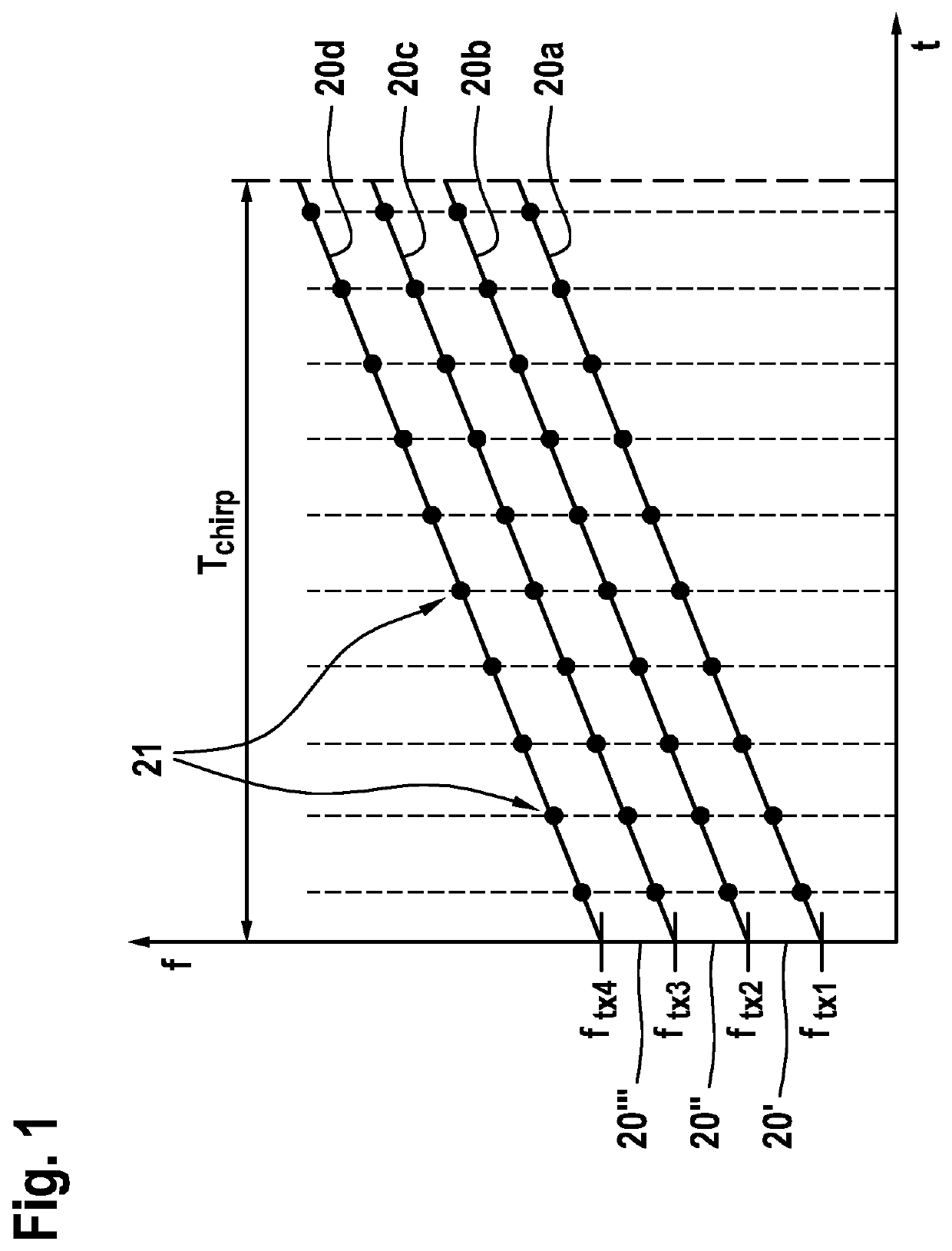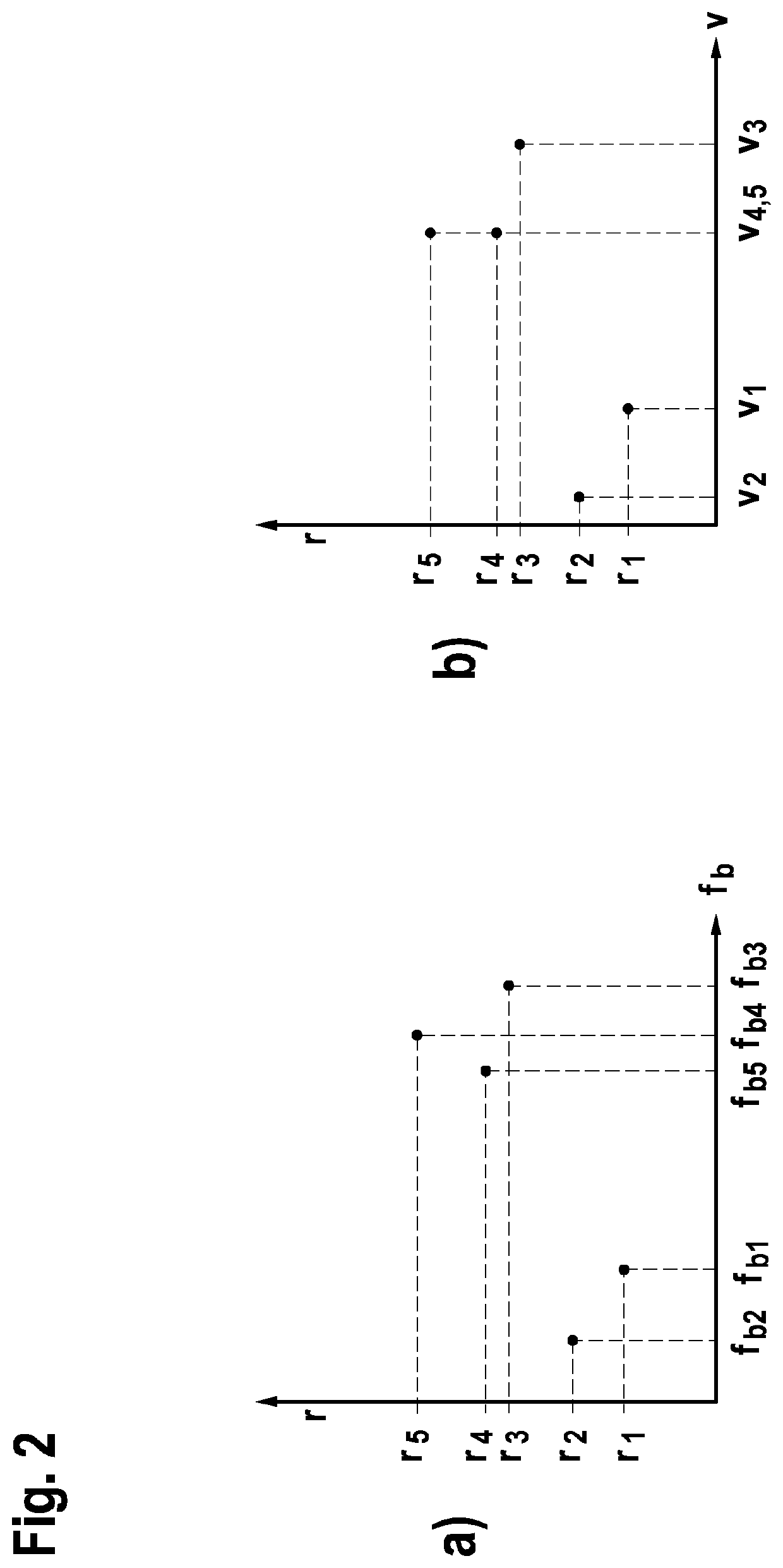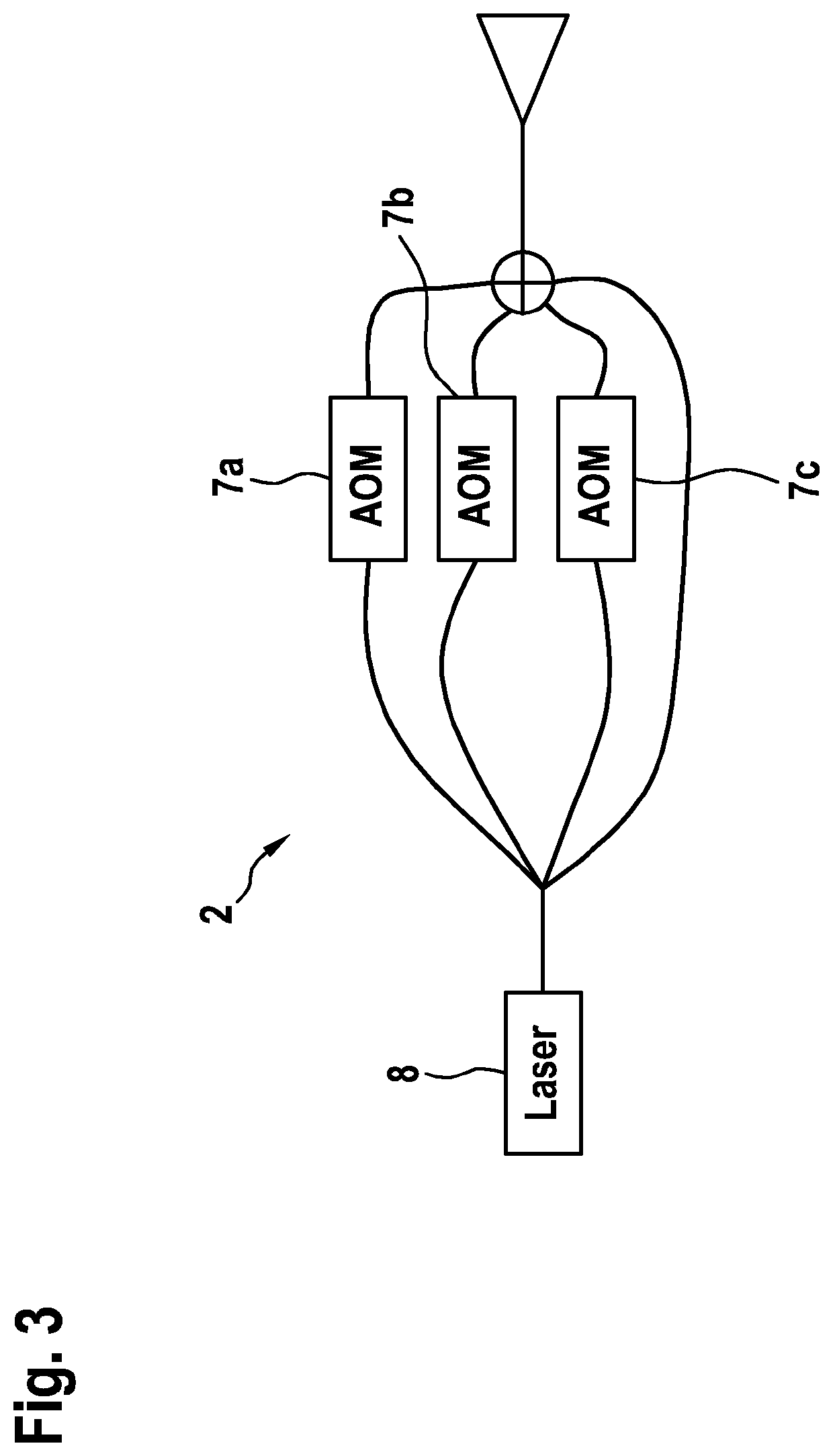Sensor device
- Summary
- Abstract
- Description
- Claims
- Application Information
AI Technical Summary
Benefits of technology
Problems solved by technology
Method used
Image
Examples
Embodiment Construction
[0030]FIG. 1 shows a time-frequency representation of the temporal variation of frequencies according to a method according to one specific embodiment of the present invention, and FIGS. 2a, 2b show a two-dimensional distance-beat frequency spectrum according to a method according to one specific embodiment of the present invention.
[0031]In FIG. 1, a frequency division multiplexing, or FDM, modulation method including four simultaneously equidistantly shifted frequency ramps 20a, 20b, 20c, 20d is shown. In FIGS. 2a, 2b, a diagram for an exemplary distribution of the peaks is shown in a two-dimensional distance-beat frequency range spectrum.
[0032]In detail, FIG. 1 shows a time-frequency representation, frequency f being plotted over time t. Four frequency ramps 20a, 20b, 20c, 20d are apparent, each of which increases with the same slope in the same time interval Tchirp. Frequency ramps 20a, 20b, 20c, 20d differ with respect to their particular starting frequency by the identical freq...
PUM
 Login to View More
Login to View More Abstract
Description
Claims
Application Information
 Login to View More
Login to View More - R&D
- Intellectual Property
- Life Sciences
- Materials
- Tech Scout
- Unparalleled Data Quality
- Higher Quality Content
- 60% Fewer Hallucinations
Browse by: Latest US Patents, China's latest patents, Technical Efficacy Thesaurus, Application Domain, Technology Topic, Popular Technical Reports.
© 2025 PatSnap. All rights reserved.Legal|Privacy policy|Modern Slavery Act Transparency Statement|Sitemap|About US| Contact US: help@patsnap.com



